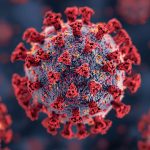Mendel’s law asserts the fact that the offspring of a cross between two pure-line individuals yield identical results. It does not matter which individual is female or male, i.e., the individual’s sex does not make any difference in Mendel’s crosses. Furthermore, it does not matter whether the male or the female parent had the recessive character. A clear exception to this law is the phenomenon of sex linkage or sex-linked inheritance. 1Sex linkage is the consequence of the gene being exclusively located in the X or Y chromosome. The genes that are located exclusively on the X chromosome are called X-linked genes, and the genes located exclusively on the Y chromosome are called holandric genes. The inheritance of the X-linked and holandric genes is called sex-linked inheritance.2
1.1. History:
The earliest known case of sex linkage is that of hemophilia in human beings. Even before 600 AD, Jews had recognized that hemophilia was a hereditary defect and that it was transmitted through females. Although generally only males were hemophilic and females were observed to be carriers. Other similar examples of sex linkage were also described, but the most clear-cut explanation of the phenomenon of sex linkage was presented by Morgan in 1910 through his study on the white eye (w) gene of Drosophila (common fruit fly).2

1.2. Types of Sex-Linked Inheritance:
Depending upon the location of corresponding genes, sex-linked inheritance can be classified into the following types:
a) X-linked Inheritance:
The X-linked type of sex-linked inheritance is performed by genes localized in the X-chromosome’s non-homologous sections. These genes have no corresponding alleles in the Y chromosome. It generally follows crisscross inheritance. 1
Characteristics of X-linked gene inheritance:
- X-linked genes always show their effect on the male phenotype, whether they are dominant or recessive.
- They show criss-cross inheritance, i.e., it is transmitted from a male parent to his daughters (who are carriers) and then to his grandsons.
- The X-linked recessive phenotype is generally found more frequently in males than in females. An affected female can result only when both male and female parents bear the X-linked recessive allele.
- Usually, the offspring of an affected male and a non-affected female will not be affected. The female offspring (daughters) will carry the gene in a masked heterozygous condition. Sons of the affected males will not inherit the X-linked recessive gene.
- The X-linked dominant gene is more frequently found in females than males. These genes are passed on by the affected males to all of their daughters but not their sons. Affected females pass on this condition to one-half of their sons and daughters.
In humans, X-linked dominant conditions are generally rare. Some examples include hypophosphatemia (Vitamin D-resistant rickets) and hereditary enamel hypoplasia (hypoplastic amelogenesis imperfecta). Similarly, some known examples of X-linked recessive genes in humans are genes for red-green color-blindness. Haemophilia, Duchenne’s muscular dystrophy, night blindness, certain forms of deafness, uncontrollable rolling of the eye (nystagmus), etc.
b) Y-linked Inheritance:
The Y-linked type of sex-linked inheritance is performed by those genes that are localized in the non-homologous section of the Y chromosome. Genes of these characters do not occur in X-chromosomes. These characters are interlinked straight from father to son or male to male. Females never carry or express these genes. Examples of holandric genes include genes for H-Y antigen, spermatogenesis, height and slower maturation of individuals, hypertrichosis (hairy ear), etc.
c) XY-linked Inheritance:
The XY-linked type of sex-linked inheritance is performed by genes localized in homologous sections of X and Y chromosomes. The X-Y linked genes are partially or incompletely sex kinked because the crossing over may occur in the homologous section of X and Y chromosomes. Certain X-Y linked genes in humans are related to total color blindness, two skin diseases (Xeroderma pigmentosum and Epidermolysis bullosa), etc.
1.3. Sex-linked lethal:
Some of the X-linked genes are lethal, i.e., they cause the death of an individual from egg up to the sexually mature adult stage. The gene for hemophilia is a recessive sex-linked lethal as it may cause death. Even slight accidental scratches, which are of no major consequences to normal individuals, may result in fatal bleeding for the hemophiliac. Sex-linked lethal will alter the sex ratio in a progeny by bringing about death.
Duchenne muscular dystrophy is a Y-linked fatal disorder. The affected individual exhibits progressive wasting away of muscles, resulting in confinement to a wheelchair by about the age of 12 years and death in teen years.2
1.4. Sex-influenced genes:
Sex-influenced genes are those genes whose dominance is influenced by the sex of the bearer. The male and female individual may have a particular trait but they may express different phenotypic expressions of the same trait. For example, the gene responsible for inherited baldness or pattern baldness is found to be dominant in males and recessive in females.2 In heterozygous conditions, it expresses itself only in the presence of male hormones.
1.5. Clinical significance:
- Prior analysis of family conditions is a vital approach for genetic counseling. The individual with a sex-linked disease history can make prior risk analysis through the knowledge of sex-linked inheritance.
- Certain non-invasive tests have been developed to detect sex-linked diseases in a fetus.
REFERENCE:
- B.D. Singh. Genetics. Second. Kalyani Publishers; 2018.
- Dr. P.S. Verma, Dr. C.K. Agrawal. Cell Biology, Genetics, Molecular Biology, Evolution and Ecology. fourteenth. (Bharatnagar S, Pradhan S, eds.). S.CHAND & COMPANY PVT.LTD.; 2016.






